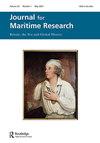The impact of Allied submarine operations on Ottoman decision-making during the Gallipoli campaign
Q3 Arts and Humanities
引用次数: 2
Abstract
ABSTRACT In the twentieth century, submarines came to the forefront of naval strategy. This secret and silent weapon moved from being an experimental project into the reality of naval battles, and eventually became a symbol of deterrence. Initially given tactical duties such as coastal defence and blockade running, submarines were quick to prove their strategic significance during the First World War, especially in Gallipoli. Throughout the campaign, Allied submarines compelled Ottoman defenders increasingly to rely on land and railway transportation, which cost six times more than seaborne supplies. Disruptions to the flow of ammunition and other supplies to Ottoman troops resulted in delays to counter-offensives and contributed significantly to the heavy rates of attrition suffered by the Turkish defenders. In addition, the submarine campaign substantially contributed to food shortages in Istanbul, then the Ottoman capital. This alone was proof of the concept that submarines could effectively be employed as strategic weapons of industrial war.加里波利战役中盟军潜艇行动对奥斯曼决策的影响
在20世纪,潜艇成为海军战略的前沿。这种秘密而无声的武器从一个实验项目变成了海战的现实,最终成为威慑的象征。潜艇最初被赋予战术任务,如海岸防御和封锁运行,在第一次世界大战期间,特别是在加里波利,潜艇很快证明了它们的战略意义。在整个战役中,盟军的潜艇迫使奥斯曼守军越来越依赖陆路和铁路运输,其成本是海运补给的六倍。向奥斯曼部队运送弹药和其他物资的中断,导致反攻拖延,并大大增加了土耳其守军的减员率。此外,潜艇战役在很大程度上造成了当时奥斯曼帝国首都伊斯坦布尔的食品短缺。仅这一点就证明了潜艇可以有效地用作工业战争的战略武器。
本文章由计算机程序翻译,如有差异,请以英文原文为准。
求助全文
约1分钟内获得全文
求助全文
来源期刊

Journal for Maritime Research
Arts and Humanities-History
自引率
0.00%
发文量
0
期刊介绍:
The Journal for Maritime Research ( JMR ), established by the National Maritime Museum in 1999, focuses on historical enquiry at the intersections of maritime, British and global history. It champions a wide spectrum of innovative research on the maritime past. While the Journal has a particular focus on the British experience, it positions this within broad oceanic and international contexts, encouraging comparative perspectives and interdisciplinary approaches. The journal publishes research essays and reviews around 15-20 new books each year across a broad spectrum of maritime history. All research articles published in this journal undergo rigorous peer review, involving initial editor screening and independent assessment, normally by two anonymous referees.
 求助内容:
求助内容: 应助结果提醒方式:
应助结果提醒方式:


